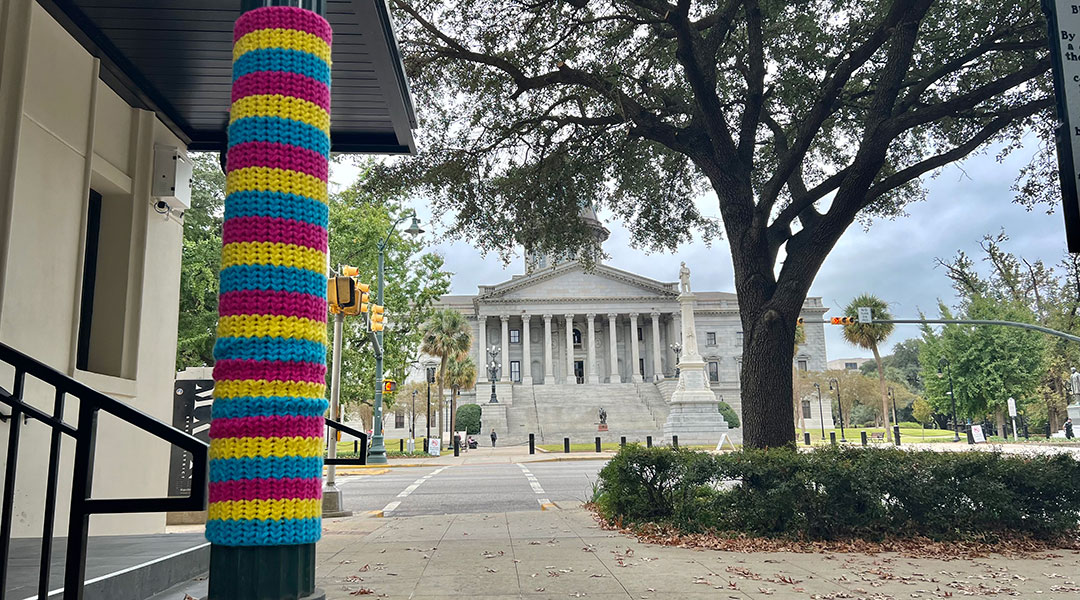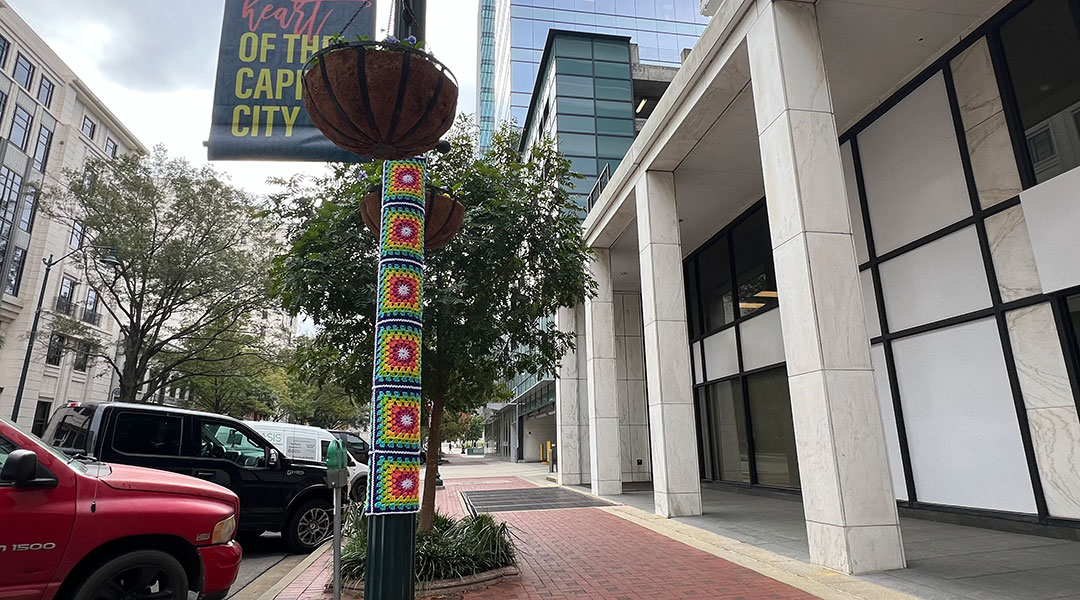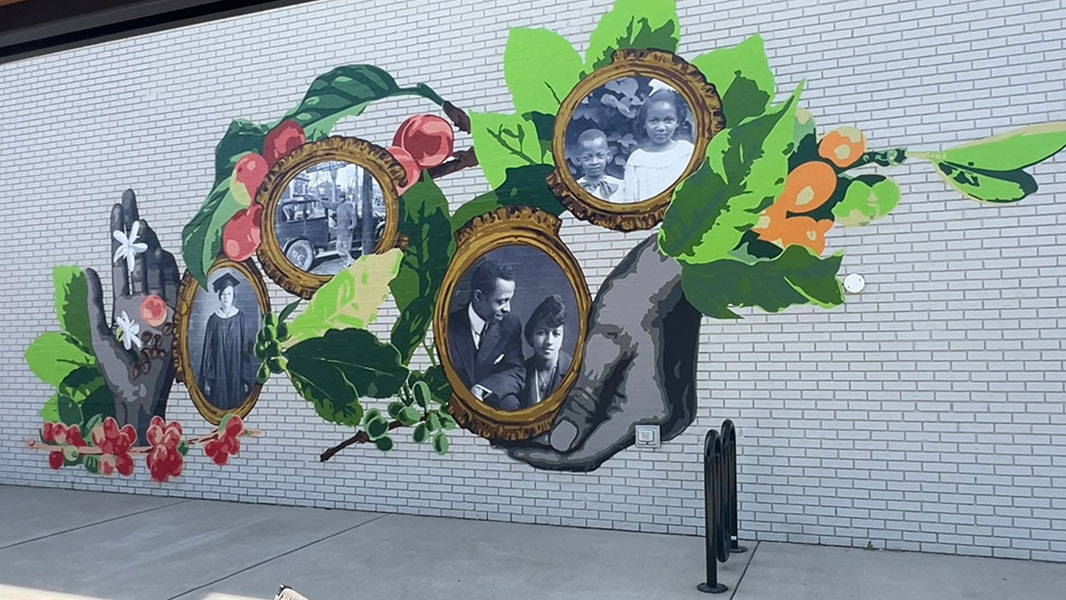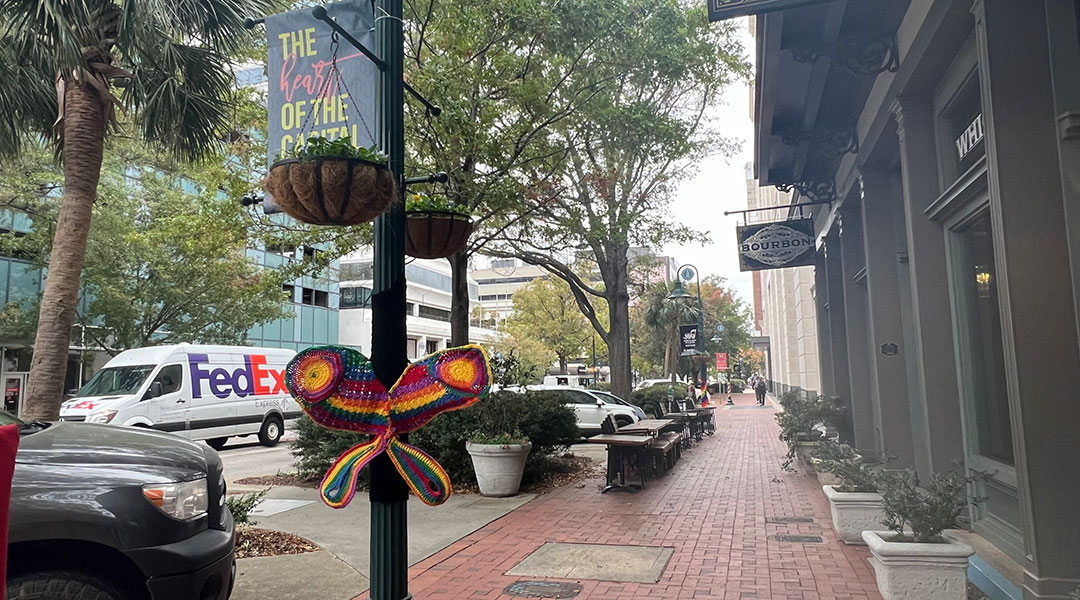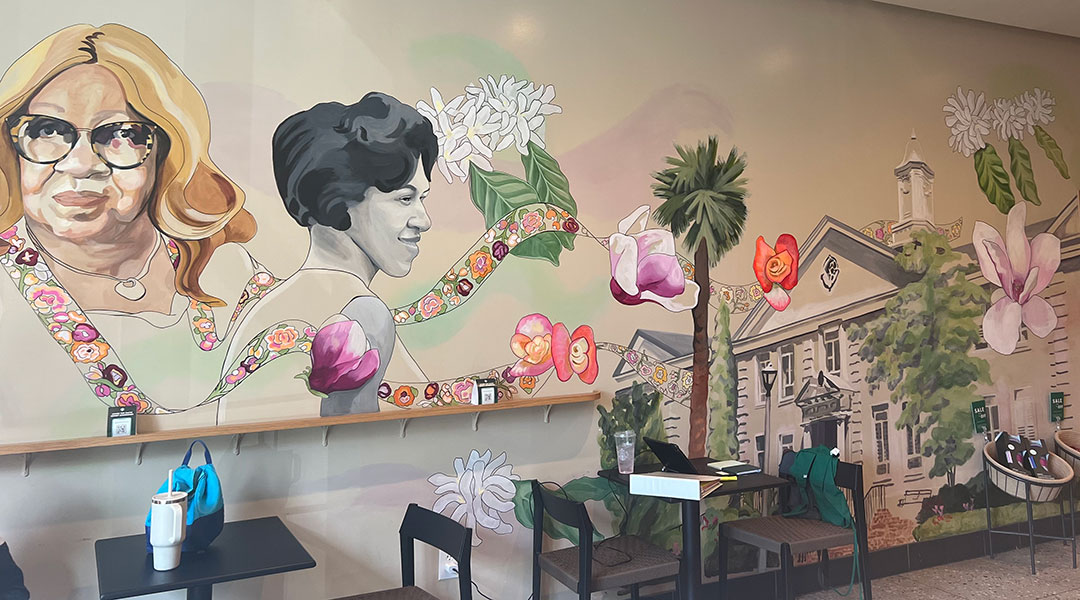The Yarnbombers of Columbia collaborated with SC Pride to decorate lampposts on Main Street. (Photos by Mollie Naugle/Carolina News & Reporter)
If you’ve taken a walk down Main Street in downtown Columbia recently, you might have noticed colorful crochet art wrapped around lampposts.
It’s the work of the Yarnbombers of Columbia, a local crochet group known for its public art installations.
Yarn bombing is a type of street art that involves knitted or crocheted pieces. Like most forms of public art, it initially was founded as a way to brighten public spaces, but its mission has evolved as the craft has expanded worldwide.
Kelsey Bickley, the director of marketing for Columbia’s Main Street District, said public art, such as the yarn bombers’ projects, helps bring downtown Columbia to life.
“When we’re talking about downtown, we think it’s very important to build an environment in between the buildings that makes people feel like there’s a little bit of something extra special,” she said. “Public art really helps connect our district as you’re walking from building to building.”
This past October, the Yarnbombers of Columbia joined forces with SC Pride to create pieces in support of the LGBTQ+ community. Yarn bomber Jill Shirey said the collaboration was a first for the group.
“To my knowledge, (it’s) the first organized yarn bomb we’ve done to raise awareness in direct support of a charity,” she said, though the group has donated its pieces to local charities in the past.
Lauren Andreu has painted multiple murals in the Columbia area. She said public art can be a form of activism, as it opens viewers’ minds to new ideas.
“I think art in general, what it can do is introduce new ideas to the viewer in a way that is palatable, I would say,” she said. “Maybe a viewer has usually a defensive reaction to a certain viewpoint or subject matter. Artwork is a way to present that same subject matter in a compelling way that is more disarming. The artist is saying, ‘I feel, I think, I see this.’ You can’t argue against that.”
Shirey was “amazed at the immediate and positive response” to the installation.
“Those who participated had personal stories related to their pieces, and the project brought in new participants from the LGBTQ+ community and supporters,” she said. “There was a lot of positivity and commitment to completing the pieces. On installation day, the yarn bombers came with family members and friends to help put up their pieces. As we were stitching our pieces onto the lamp posts, many people stopped to compliment (them) and ask what it was all about.”
While Andreu has had similar positive reactions to her murals, she has also experienced firsthand the nuances that come with using art as an avenue for activism.
“There was a gentleman who reached out to me who was irate about a mural,” she said. “He was concerned about gentrification in the area. The place where I painted the mural, he saw that business as also part of the gentrification issue, and then me, not only being contracted by them, but then also doing a mural on the side and outside was like, ‘Oh, how dare you.’ He thought of me like selling my soul to the devil even though the artwork was to honor a group of people, and yet people connected to those people were the ones being kicked out of the area.”
Andreu feels these responses come with the territory when it comes to activism, but artists can still recognize the problems their work can cause.
“There’s no simple solution, and as artists, I think we can be conscious of that, too,” she said. “The mural you put up, as joy or beauty to the space, may also contribute to gentrification.”
Still, public art continues to be a force for change and a vital part of the Columbia community.
Shirey said she hopes the Yarnbombers of Columbia will continue to create art for a cause.
“I feel there will be future projects from the Yarnbombers of Columbia that unite creativity and communicate powerful messages,” she said.
Even so, the communal aspect of the yarn bombing group alone makes the art more effective and inspiring, Shirey said.
“We hope people enjoy the installations and that they provoke thoughtful conversations,” she said. “It is a great opportunity for crocheters and knitters of all skill levels to be artistic and create something with their hands, but as part of a project, when installed together, becomes more impactful.”
The yarn bombers crocheted and knitted the pieces in support of the LGBTQ+ community.
Muralist Lauren Andreu’s art can be found throughout Columbia and frequently honors marginalized groups in the community.
Yarn bombing is a form of street art that involves crocheted or knitted art, as opposed to more commonly used media such as paint or chalk.
Andreu said art can be an avenue for activism, but using it as such often comes with nuances that artists should acknowledge.

